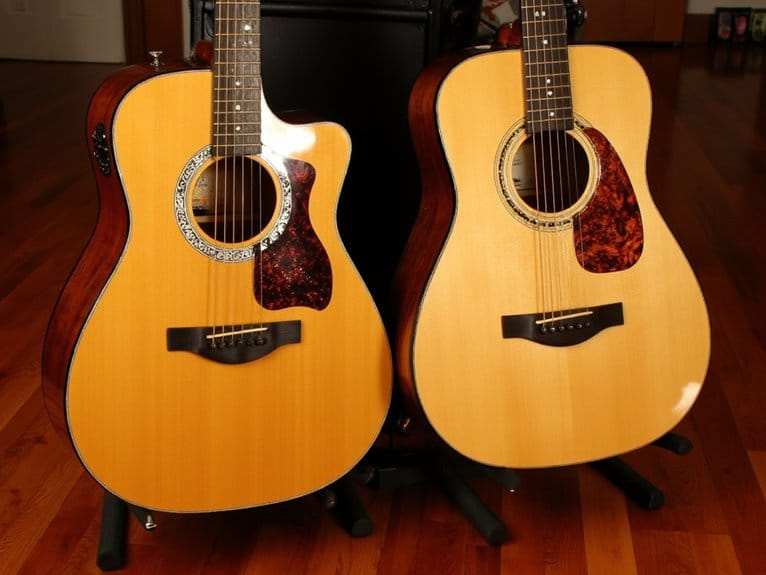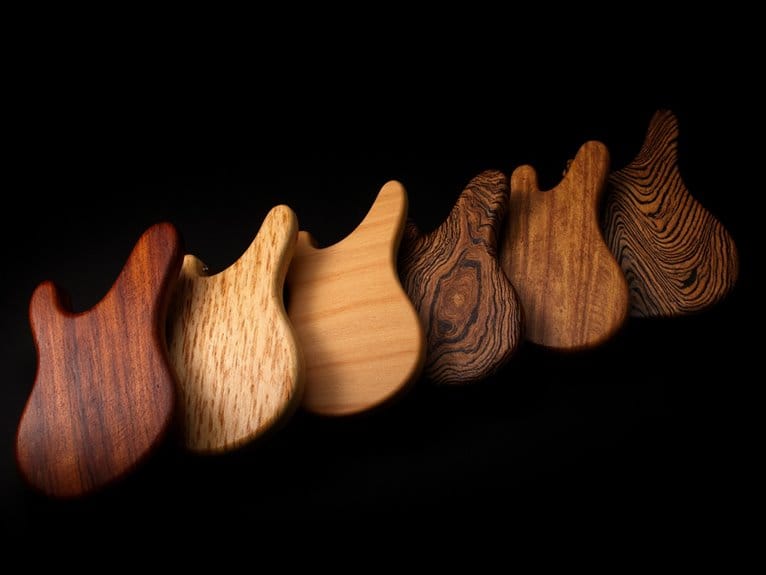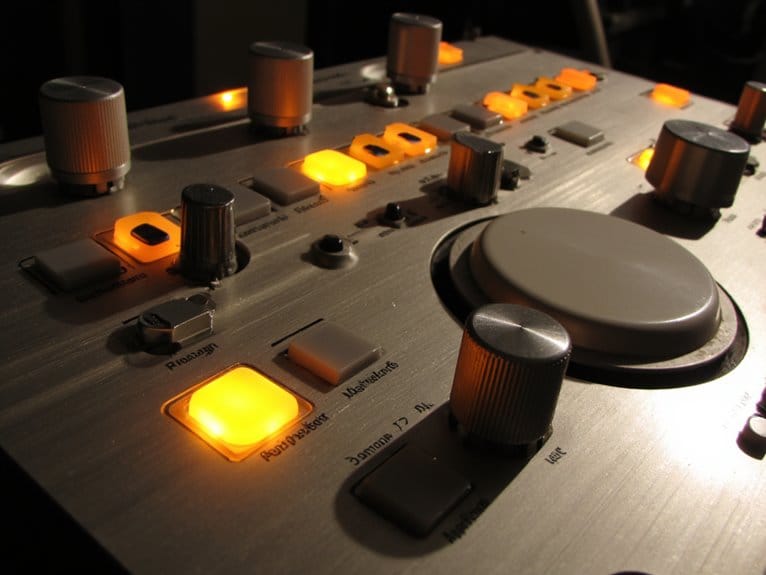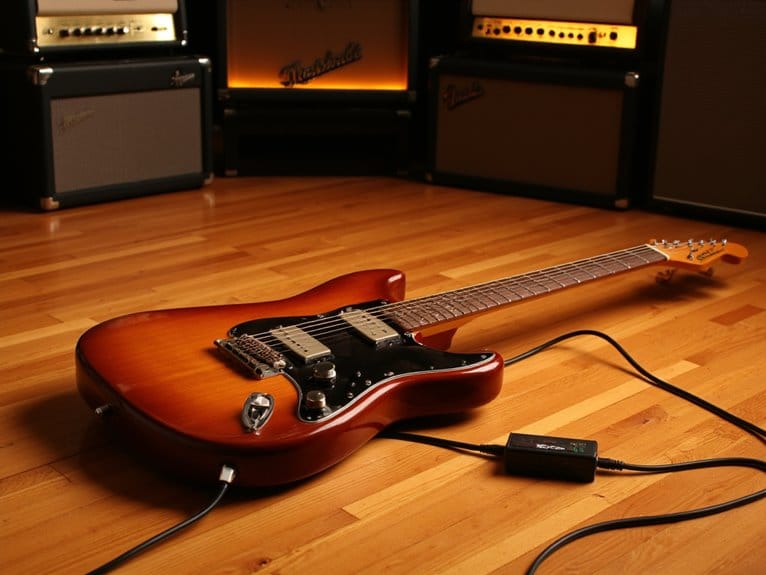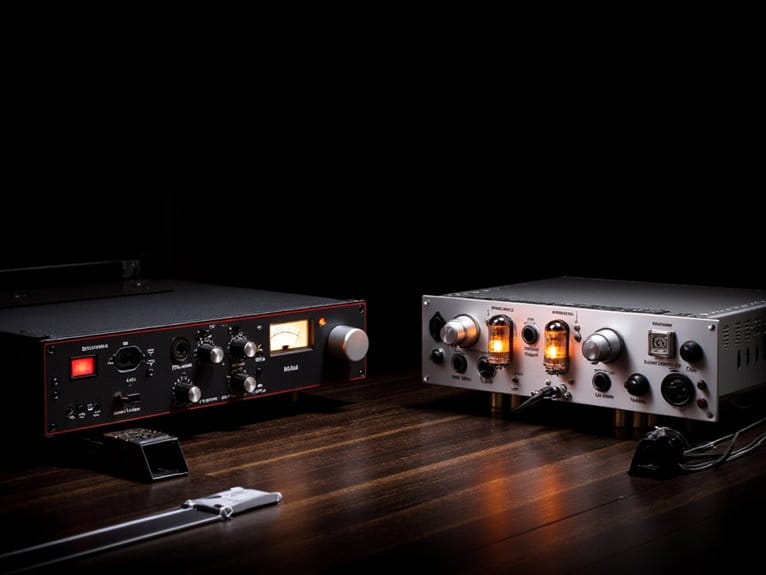Martin & Gibson Acoustic Guitars: Comparing the Legends
When you’re choosing between Martin and Gibson acoustics, you’re selecting between two legendary approaches to sound-Martin delivers crystalline clarity with warm, balanced tones and precise articulation that’s perfect for flatpicking, while Gibson offers rich midrange punch with vintage woody characteristics and softer attack. Martin’s heritage spans back to 1833 with seven-year apprenticeship programs ensuring meticulous craftsmanship, whereas Gibson balances accessibility with premium quality, and both brands occupy the $3,000-$6,000 sweet spot, though exploring their specific models reveals deeper distinctions.
We are supported by our audience. When you purchase through links on our site, we may earn an affiliate commission, at no extra cost for you. Learn more.
Notable Insights
- Martin and Gibson both have century-plus legacies, with Martin founded in 1833 and extensive heritage impacts on guitar markets.
- Martin delivers wide, warm tones with clear decay, while Gibson offers pronounced midrange punch and vintage woody characteristics.
- Martin features diverse body shapes and ergonomic designs like slimmer necks, while Gibson balances accessibility with traditional craftsmanship.
- Gibson starts around $2,000 with 40% dealer discounts available, while Martin maintains stricter pricing with limited discounting options.
- Both brands dominate the $3,000-$6,000 mid-range segment, with Martin emphasizing exclusivity and Gibson focusing on heritage accessibility.
Heritage and Craftsmanship Legacy
When you’re examining the acoustic guitar landscape, it’s impossible to ignore the towering presence of Martin and Gibson, two manufacturers whose combined heritage spans nearly three centuries of American craftsmanship.
Martin’s 1833 founding established a heritage impact that reverberates through today’s guitar market, while Gibson’s century-plus acoustic legacy demonstrates comparable staying power.
Both companies developed sophisticated craftsmanship techniques requiring extensive apprenticeships-Martin demands seven years before builders can craft complete instruments, reflecting their commitment to quality over speed.
I’ve observed how their early mandolin and ukulele production shaped their understanding of fretted instruments, contributing to innovations that defined modern acoustic guitar construction.
Their sustained excellence proves that authentic heritage, combined with refined craftsmanship techniques, creates instruments that remain highly sought after decades later.
Tonal Characteristics and Sound Profiles
Heritage alone doesn’t determine why guitarists gravitate toward specific instruments-it’s the distinctive tonal personalities that Martin and Gibson have cultivated over decades that truly separate these manufacturers in the minds of players.
While brand loyalty runs deep among acoustic players, it’s the unique sonic fingerprints each manufacturer has developed that truly drives instrument selection.
You’ll discover that Martin delivers dimensional sounds characterized by wide, warm tonal spectrum with steady attack, notable sustain, and clear decay that defines classic Americana acoustic music.
Gibson’s acoustic nuances showcase pronounced midrange punch with fast attack characteristics, creating powerful string presence though sometimes exhibiting thumpy bass qualities.
Martin’s spruce-topped models provide clear articulation with pronounced brightness, making them ideal for flatpicking where note separation matters most.
Gibson’s warmer, fuller-bodied tone leans toward vintage woody characteristics with soft attack and subdued high-end brightness, perfect for rhythmic accompaniment.
Design Features and Playability
While tonal characteristics capture a guitarist’s initial attention, the physical design elements and playability features ultimately determine whether an instrument becomes a lifelong companion or collects dust in the corner.
Martin’s diverse body shapes, from bold dreadnoughts to compact 000 models, offer distinct playing experiences that accommodate different performance styles and physical comfort preferences. The neck design particularly stands out in newer series like the X Series, featuring slimmer, beveled profiles that reduce hand fatigue during extended playing sessions.
Martin’s refined string spacing enhances fingerpicking accuracy, while satin finishes eliminate that sticky feel that can slow down chord shifts.
These thoughtful ergonomic considerations, combined with scalloped X-bracing and quality fingerboard materials like ebony, create instruments that respond naturally to your playing touch.
Pricing and Market Positioning
Beyond the aesthetic appeal and tonal qualities that draw guitarists to these legendary brands, the financial investment required reveals stark differences in how Martin and Gibson position themselves within the acoustic guitar market.
Gibson’s market accessibility becomes apparent through their $2,000 entry point and dealer discount strategies that can reduce prices by 40% off list, making professional-grade instruments more attainable for serious players.
Martin, conversely, maintains stricter pricing policies with limited discounting, positioning themselves as premium acoustic specialists with models reaching $135,000 for limited editions.
While both brands occupy the $3,000-$6,000 mid-range segment, Gibson’s pricing flexibility and Martin’s price stability reflect their distinct approaches-Gibson balancing heritage with accessibility, Martin emphasizing exclusivity and artisanal craftsmanship that commands premium pricing.
For musicians seeking quality instruments in the sub-$1,500 range, alternatives featuring solid spruce tops with mahogany backs can deliver premium tonal performance that rivals more expensive models. Budget-conscious players can achieve customer satisfaction ratings of 4.4-4.7 stars with instruments under $300 that utilize quality woods like mahogany and basswood construction.
On a final note
You can’t go wrong with either Martin or Gibson, though I’ll admit choosing between them often comes down to personal preference and your specific musical style. Martin’s precision-crafted spruce tops deliver that crisp, articulate sound that flatpickers love, while Gibson’s mahogany-heavy construction produces those warm, woody tones perfect for strummers. Consider your budget, playing style, and tonal preferences-both brands offer exceptional instruments that’ll serve you well for decades.

